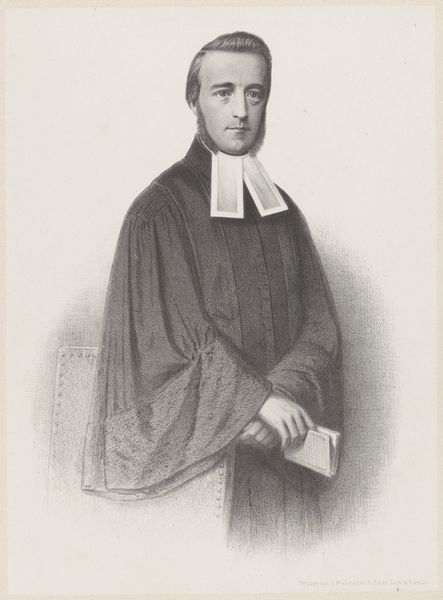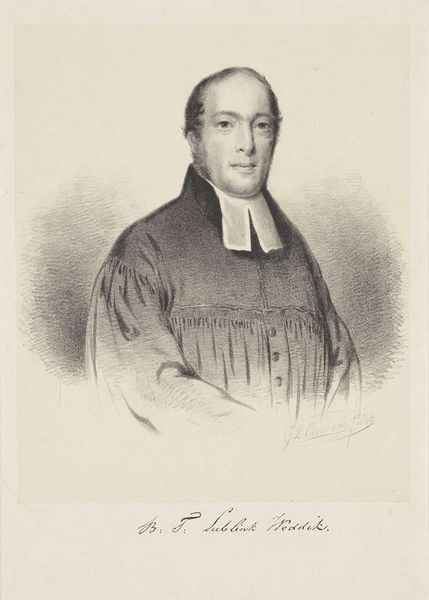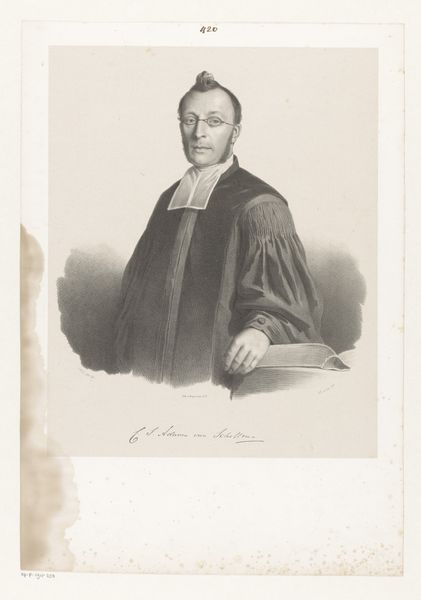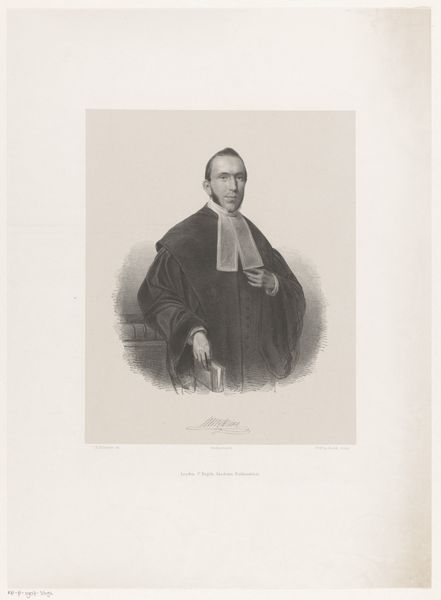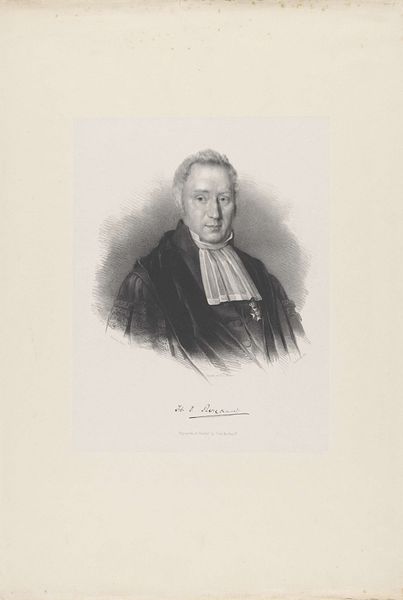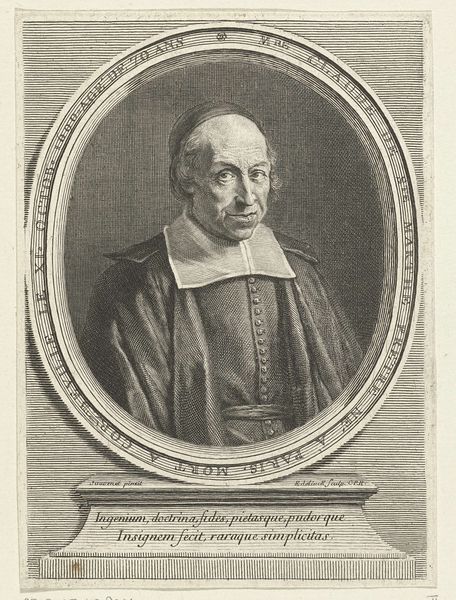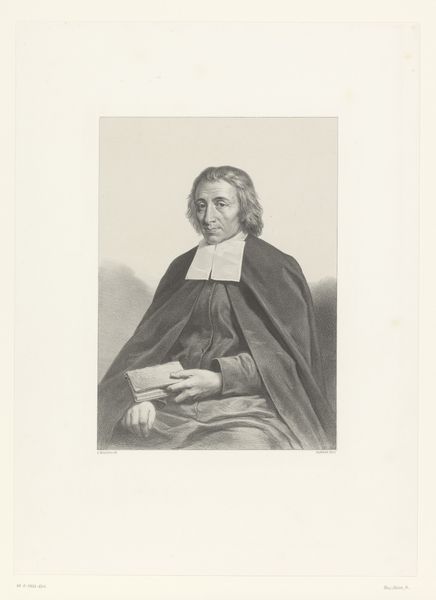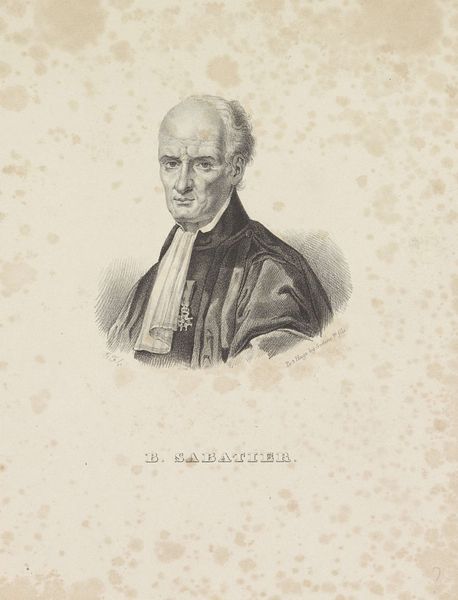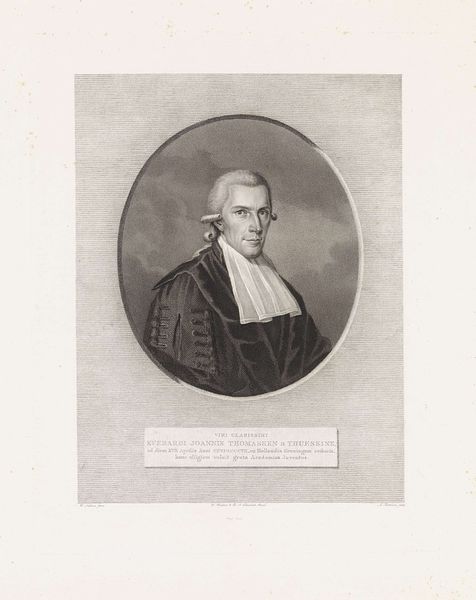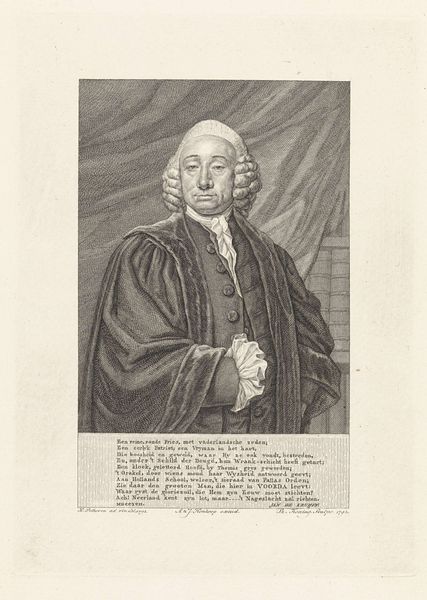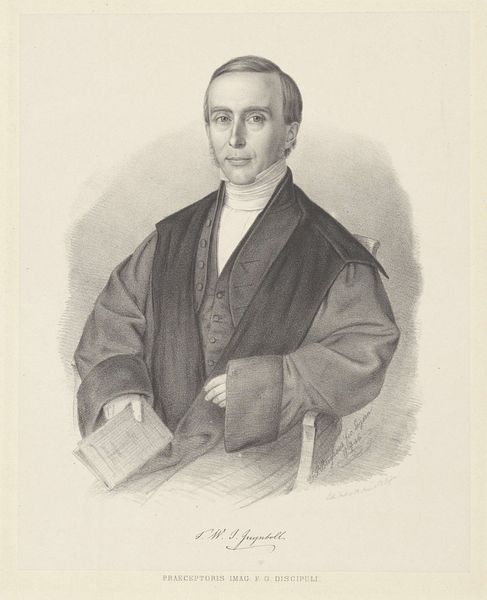
drawing, graphite
#
portrait
#
pencil drawn
#
drawing
#
facial expression drawing
#
light pencil work
#
book
#
pencil sketch
#
portrait reference
#
pencil drawing
#
limited contrast and shading
#
graphite
#
portrait drawing
#
pencil work
#
realism
Dimensions: height 438 mm, width 347 mm
Copyright: Rijks Museum: Open Domain
Curator: This is Johann Peter Berghaus’ "Portret van Hendrik Justus Matthes," likely from 1854. It currently resides in the Rijksmuseum. Editor: My first impression is one of quiet dignity. The graphite lends a softness to the lines, even in capturing his rather stern expression. Curator: Indeed. Consider Matthes's attire and bearing – the stark collar speaks to his position within the church, reinforcing his authority within the social hierarchy. The book is not merely an accessory; it's an assertion of intellect and spiritual leadership. Editor: I'm immediately drawn to the rendering of his garments. The way Berghaus employs varied pressure with his graphite creates these tangible folds in the fabric. This focus shifts our attention towards labor; both the labor of the artist creating this work, and potentially the means of material production of the cleric’s robes, locating this work firmly within a web of social contexts. Curator: That's a compelling angle. His pose and direct gaze might invite the viewer to see him as a pillar of his community. It's a calculated representation, reinforcing conventional ideals surrounding piety and the role of religious figures. How do you think the medium itself – graphite – informs the viewing experience? Editor: I think using graphite adds to that sense of austerity. It democratizes the portrait; unlike a painted commission, it speaks of accessible materials and labor. While not accessible to all, of course, this choice allows insight into production means beyond only celebrating the status of the sitter. It feels less opulent, more grounded. Curator: An intriguing interpretation! I see it as reinforcing a subtle yet potent message about Protestant virtue. The simplicity of the graphite aligns with notions of modesty, a departure from extravagance that could resonate strongly with his congregants. This representation may also attempt to reconcile perceived oppositions between the spiritual and the material. Editor: I’m left wondering about access—who would have been able to afford to commission or buy a drawing like this? Was it for personal use within his family? These drawings can operate as fascinating material traces, gesturing toward social realities often left out of broader historical narratives. Curator: Absolutely, considering those factors provides more depth. Analyzing beyond aesthetics reveals layers of meaning—the artist's choices, Matthes's status, and their socio-historical contexts—that prompt us to reconsider representations of power and identity in the 19th century. Editor: Precisely. Exploring this work reveals a whole tapestry of social meaning knitted together through pencil on paper, the same act revealing as it obscures aspects of production and social class.
Comments
No comments
Be the first to comment and join the conversation on the ultimate creative platform.
